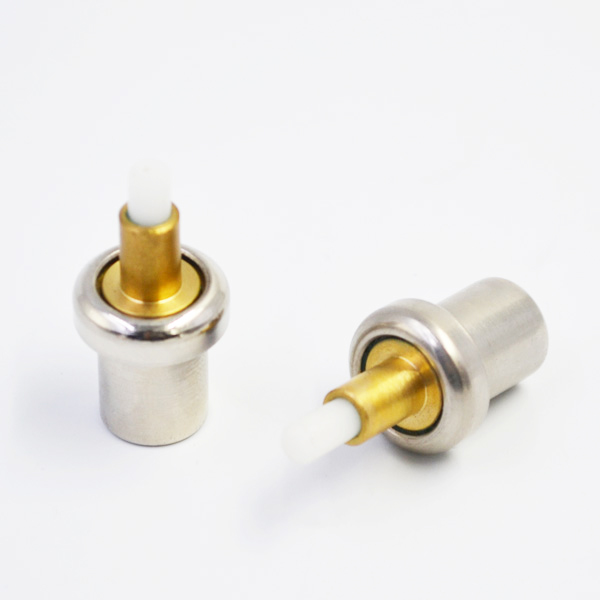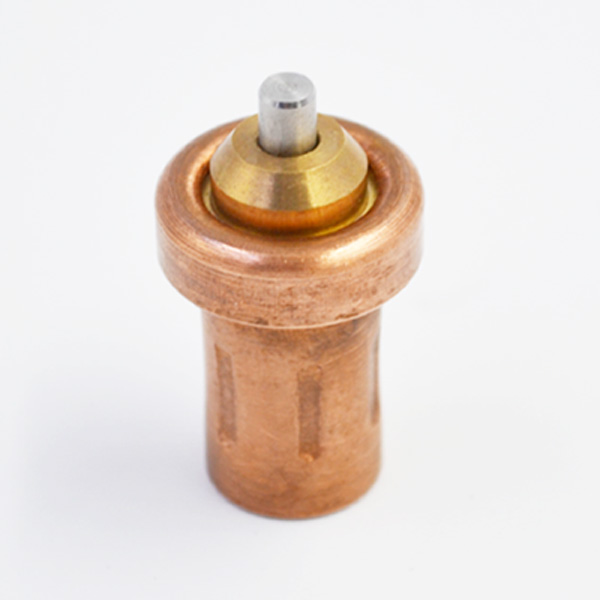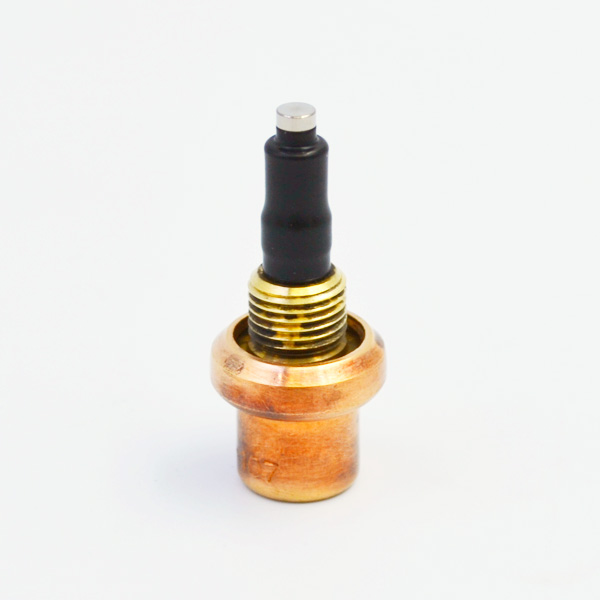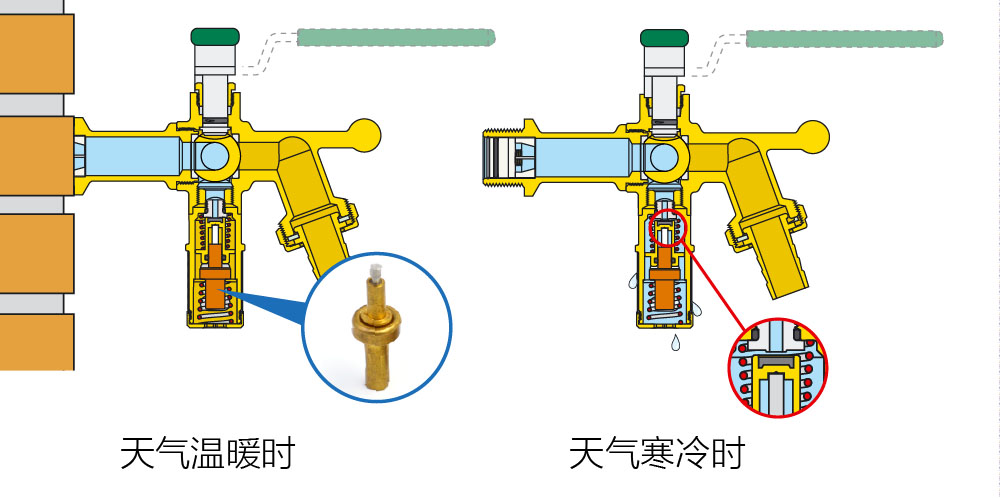The energy-saving controller of grid-connected photovoltaic system is designed and implemented, and the design flow of hardware and software is given. The module of photovoltaic grid-connected scheme is designed to analyze the voltage and current value obtained, and get the optimal current value of photovoltaic array output. The value is fed back to the grid-connected current management module. The output current of grid-connected converter is adjusted and controlled in real time to ensure that it is in the best state and minimize the consumption of grid-connected power. The islanding effect of photovoltaic grid is detected by wavelet analysis method, and the grid-connected current positioning module is controlled to terminate work, so as to avoid energy waste and realize energy-saving control. The experimental results show that the energy-saving control effect of the designed controller is remarkable and the energy consumption can be balanced. With the development of social economy, people’s demand for energy is increasing. Energy conservation and emission reduction have become the focus of people’s research [1?3]. The photovoltaic grid-connected power generation system can convert solar energy into electric energy and integrate into the grid through three-phase mode. This method can maximize the use of solar energy and facilitate the control of power grid. However, the system has some problems, such as high cost and low efficiency of power generation, and is vulnerable to environmental interference, which leads to the random drawbacks of power generation. Therefore, the energy-saving controller is designed to ensure that the energy application of grid-connected photovoltaic power generation system is minimized [4?6]. Literature [7] A photovoltaic operation monitor is designed by virtual instrument method, which can detect the status of grid-connected photovoltaic power generation system and electric energy. It is easy to be disturbed by the external environment and the defects of the instrument itself, and has certain limitations. Document [8] adopts deadbeat power control method to manage the photovoltaic grid-connected system and realize energy-saving control. However, this method is sensitive to the characteristics of the photovoltaic grid-connected system. Once the characteristics of the system are lost or disturbed by noise, the quality of energy-saving control of this method will be greatly reduced. Literature [9] analyzed the energy-saving control scheme based on the photovoltaic inverter control platform. The control scheme has high anti-interference performance, but the control accuracy is low and the energy-saving effect is poor. The energy-saving control method of grid-connected photovoltaic power generation based on virtual instrument technology proposed in document [10] is to shape the simulation model of photovoltaic power generation unit, obtain the output characteristics of the grid-connected photovoltaic system, and realize the self-diagnosis of the system. This method has high control accuracy and energy-saving effect, but it needs to consume a lot of energy. To solve the above problems, the energy-saving controller of grid-connected photovoltaic power generation system is designed and implemented, which includes photovoltaic array characteristic control module, grid-connected output power control module, grid-connected current control module and islanding effect prevention module. The energy-saving controller of photovoltaic grid-connected power generation system includes the maximum power point positioning management module, photovoltaic grid-connected scheme module, grid-connected current management module and islanding effect prevention module. Four modules work together to form an energy-saving controller for photovoltaic grid-connected power generation system, as shown in Figure 1.

The maximum power point positioning module collects the output voltage and current of photovoltaic array, manages the converter, ensures that it is in the state of maximum power output, makes the energy consumption of photovoltaic power generation system the best, and avoids the waste of electric energy. At the same time, the obtained voltage and current values are fed back to the photovoltaic grid-connected module. The module of grid-connected photovoltaic system calculates the optimal current value of photovoltaic array output, and feeds it back to the grid-connected current management module. The grid-connected current management module controls the output current of the grid-connected converter in real time, which makes it in the optimal state and ensures the lowest power consumption of grid-connected photovoltaic system. The prevention and control of islanding effect analyses the operation status of power grid. If islanding effect exists, the control and control of grid-connected current positioning module terminates its work, restrains excessive power consumption, and achieves the goal of energy saving. There is a non-linear relationship between output power and output voltage of solar array. Under different illumination intensity and ambient temperature, there are different curves between output power and voltage of photovoltaic array. But each working line seeks a working point, which has the maximum output power and is the best operating point of solar array in photovoltaic power generation system. The maximum power location algorithm ensures that the output of solar array is at the optimal operating point, which can enhance the power generation efficiency of solar photovoltaic power generation system, improve the utilization of electric energy, thermostatic element and achieve the goal of energy saving. The maximum power positioning management module of photovoltaic grid-connected system is a Boost converter. The duty cycle of the converter is regulated, the input current of the Boost converter can be adjusted, the output voltage of the photovoltaic array can be managed, and the maximum power positioning can be achieved. The Boost control circuit of photovoltaic array used in the positioning process is shown in Figure 2.
By adjusting the duty cycle D of the output pulse of Boost controller, the load resistance [RL] can be set in the range of 0-R to ensure that [RL] matches the equivalent impedance [Req] of the photovoltaic array. Boost converter does not consume active power. In this case, the load resistance R can obtain the highest transmission power, and ultimately the maximum power uses the energy output from photovoltaic panels. The maximum power point positioning process consists of two parts: first, according to the results of the output current and voltage of the photovoltaic array, the voltage reference instruction [Vref] of the output photovoltaic array working point is obtained by conductivity increment method, and then [Vref] is closed-loop managed by PI regulator and Boost converter to complete the maximum power point positioning control of the photovoltaic array. The implementation of this process is shown in Figure 3. Three-dimensional space vector control in voltage source converter can only manage the output voltage of photovoltaic grid-connected by vector synthesis. In order to locate the reference voltage accurately and real-time, the current closed-loop control scheme based on open-loop space vector control (SVPWM) is adopted to optimize the design of grid-connected current management module to ensure that the optimal current flow can be obtained and the minimum energy consumption can be ensured. The designed grid-connected current management module has a voltage feed-forward open-loop SVPWM current closed-loop control scheme. The data processor is regarded as the key module. The grid-connected current management module is shown in Figure 4. Each link of the grid-connected current management module in Figure 4 is composed of corresponding programs. The transfer function of the power converter is [H (s)], and the filter output circuit is adopted. The current regulator and feed-forward regulator are controlled by the digital controller management program. During the operation of the current positioning controller, the grid voltage and output current in the grid-connected busbar are collected at the same time, and the reference value of output current is obtained by calculating the photovoltaic grid-connected scheme.

The reference value and the real current are compared and analyzed. The difference between the reference value and the real current value is regarded as the best current value, and the optimal current value is input into the current regulator. The sampled grid voltage is integrated into the output signal of the prototype voltage converter to complete feedforward compensation, filter the adverse interference of grid voltage, improve the efficiency of power signal transmission, and maximize the use of electricity. If the sampling period of the current is T, the sampling delay of the current location controller is [e-sT]. STM32 is embedded into the mainstream real-time operating system mc/os? II to design energy-saving controller software.
Programming on this system can simplify the program. The main flow chart of energy-saving controller software design is shown in Fig. 5.

The software design process of the energy-saving controller of the grid-connected photovoltaic system described in Fig. 5 is as follows: A/D operation is carried out on the voltage and current signals collected from the photovoltaic grid, the output voltage and current of the photovoltaic array are obtained through the maximum power point positioning module, and the results are input into the photovoltaic grid-connected scheme module for analysis, and the optimal current value of the grid-connected photovoltaic system is obtained. The module locates the output current of the grid-connected converter. Wavelet analysis method is used to detect the islanding effect of photovoltaic grid, and control the termination of grid-connected current positioning module to achieve energy-saving control. Experiments verify the performance of the energy-saving controller designed in this paper.
Under the experimental system, the voltage waveform obtained by the controller in this paper is shown in Fig. 6 when the grid-connected photovoltaic system is in stable state and starting to work. Fig. 6 (a) The voltage waveform of the energy-saving controller when the signal of the photovoltaic solar array does not exceed the A/D input region; Fig. 6 (b) The voltage waveform of the energy-saving controller when the signal exceeds the A/D input region. Figure 7 shows the PWM waveform of photovoltaic grid-connected system under light load. By comparing and analyzing Figure 6 and Figure 7, it can be seen that the effective voltage value of the system is lower than that of the system without energy-saving regulation and control, and a higher energy-saving effect has been achieved. The experiment uses the energy-saving controller designed in this paper to control the energy use of XIAU cabin, which uses photovoltaic power generation. The experiment simulates the daily living of different cabins, opens related household appliances regularly, and analyses the energy use data of the cabin in a period of time. Figure 8 shows the electricity consumption statistics of different huts.
From figure 8, we can see that XIAU house has the lowest electricity consumption. Therefore, using the energy-saving controller designed in this paper, the energy-saving effect of energy-saving control of XIAU cabin is remarkable. Statistical results of electricity generation, electricity consumption and surplus electricity of each hut are shown in Table 1. From Table 1 and Figure 9, we can see that the energy consumption of each hut is balanced. The XIAU cabin regulated by the energy-saving controller in this paper has the best energy balance effect. It has a high photovoltaic power generation capacity of 493.45 kW.

h, the lowest electricity consumption is 110.29 kW. h, and the maximum surplus electricity is 363.26 kW. H. These data show that the energy-saving controller of photovoltaic power generation system designed in this paper has high application value and achieves the goal of energy-saving. This paper designs and implements an energy-saving controller for grid-connected photovoltaic power generation system, which includes grid-connected maximum power point positioning management module, photovoltaic grid-connected scheme module, grid-connected current management module and islanding effect prevention module. Maximum power point positioning management module collects the output voltage and current of photovoltaic array, manages the converter, ensures that it is in the state of maximum power output, and improves the efficiency of energy use. The module of photovoltaic grid-connected scheme analyses the voltage and current value obtained, and obtains the optimal current value of photovoltaic array output.

The value is fed back to the grid-connected current management module. The output current of grid-connected converter is regulated and controlled in real time to ensure that it is in the best state and minimize the consumption of grid-connected power.
The islanding effect of photovoltaic grid is detected by wavelet analysis method, and the grid-connected current positioning module is controlled to terminate work, so as to avoid energy waste and realize energy-saving control. The experimental results show that the energy-saving control effect of the designed controller is remarkable and the energy consumption can be balanced.
